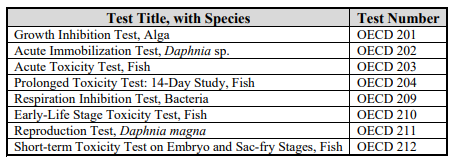In our last blog we discussed the differences between 'environmentally friendly', 'inherently biodegradable', and 'readily biodegradable' lubricants. But what are 'Environmentally Acceptable Lubricants'?
Environmentally Acceptable Lubricants
Environmentally Acceptable Lubricants (EALs) are a special class of biodegradable lubricants. These lubricants meet the criteria set by the Environmental Protection Agency (EPA). This designation is to ensure that consumers know exactly what specifications are met when they are purchasing an EAL product.
To meet the standards of an EAL, the lubricant must pass tests in three categories Biodegradability, Toxicity, and Bioaccumulation.
Biodegradability
EALs must be readily biodegradable. This means that more than 60% of the lubricant will be broken down in 28 days or less. These lubricants undergo the standard ASTM test method (ASTM D7373) to meet this requirement.
Toxicity
EALs must also have a low toxicity to aquatic life. Here are all the tests to determine toxicity:

Bioaccumulation
EALs cannot bioaccumulate.
Bioaccumulation is the build-up of chemicals within the tissues of an organism over time. This is something that most people are familiar with through the studies of Mercury accumulation in fish.
Base Oils
The choice of base oil plays a large role in determining whether the lubricant is an EAL or not. Most conventional lubricants are created with a mineral base oil. As you can see in the table below, mineral oils do not meet the criteria for an EAL.

The criteria for EALs is tough to meet. Only through planning specific base oils and additives can you make a truly Environmentally Acceptable Lubricant.
Need an EAL or have more questions about what they are? Call us at 1.800.463.0354.